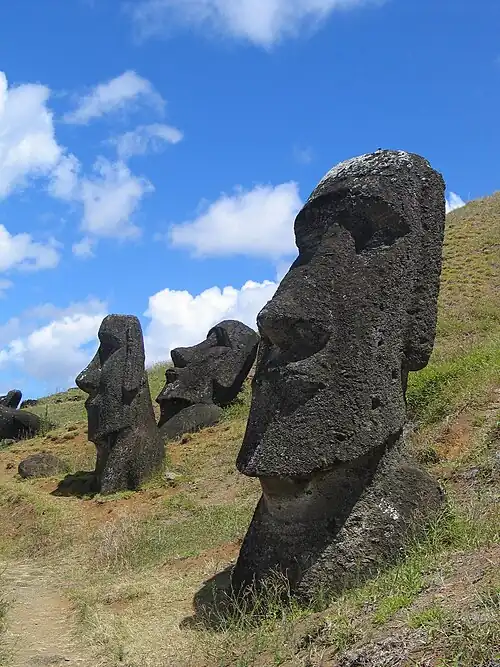| 1710s . 1720s in archaeology . 1730s |
| Other topics: N/A |
| |||
|---|---|---|---|
|
The decade of the 1720s in archaeology involved some significant events.
Explorations
- 1722: Dutch explorer Jacob Roggeveen arrives at Easter Island.
Excavations
- Formal excavations continue at Pompeii.

1722: Easter Island.
Finds
- 1723: Roman inscribed stone found in Chichester, England.
- 1725: Rudge Cup found in England.
- 1727: Gilt bronze head from cult statue of Sulis Minerva from the Temple at Bath, England, found by workmen excavating a sewer.
Publications
- 1723: Antoine de Jussieu publishes De l'Origine et des usages de la Pierre de Foudre on the origins of fossils, prehistoric stone tools and meteorites.[1]
Births
- 1721: Nicholas Revett (d. 1804)
- 1726: October 12 - Pierre Henri Larcher (d. 1812)
- 1729: 25 September - Christian Gottlob Heyne, German archaeologist (d. 1812)
References
- ↑ "Les pierres de foudre". Retrieved 2011-10-18.
This article is issued from Wikipedia. The text is licensed under Creative Commons - Attribution - Sharealike. Additional terms may apply for the media files.